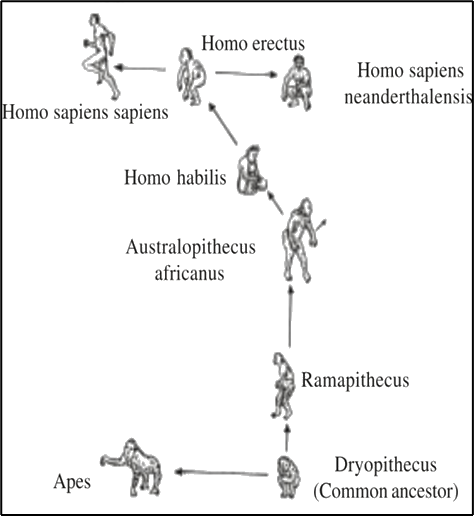Covid-19 and Neanderthal Genomes
Why in News
Evolutionary biologists from different countries have shown that the regions of host genomes that increase the risk of getting severely ill and protect against the SARS-CoV-2 virus were inherited from Neanderthals.
- Neanderthals are an extinct species of hominids that were the closest relatives to modern human beings.
Key Points
- Findings:
- A region on host chromosome 3 acts as a significant genetic risk factor towards getting seriously ill and, at the same time, a group of genes on chromosomes 6,12,19, and 21 protect us against the virus.
- Modern day humans share a stretch of 50,000 nucleotides (nucleotides are the basic building blocks of DNA) in chromosome 3 with Neanderthals.
- About 50% of South Asians carry the region in chromosome 3 from Neanderthal genomes, the same region that makes us more prone to getting severely sick with the virus.
- A part of host chromosome 12, previously shown to protect against the virus, also was inherited from Neanderthal genomes.
- Nearly 30% of South Asians bear the chromosome 12 region.
- Importance:
- Viruses can only survive and multiply in host cells. Therefore, understanding the host genome is paramount to studying both susceptibility and protection against the virus in a given population.
- While specific genes from Neanderthals are working against the virus and protecting us from getting a severe disease, others are associated with an increased risk of getting critically ill. This push and pull effect may be one of the intriguing facts about how the selection of genes happens during evolution.
Human Evolution
- Human evolution is the evolutionary process that led to the emergence of anatomically modern humans, beginning with the evolutionary history of primates—in particular genus Homo—and leading to the emergence of Homo sapiens as a distinct species of the hominid family, the great apes.
- Stages of Evolution of Human:
- Dryopithecus
- Ramapithecus
- Australopithecus
- Homo
- Homo habilis
- Homo erectus
- Homo sapiens
- Homo sapiens neanderthalensis
- Homo sapiens sapiens
- Neanderthals:
- Neanderthal (Homo neanderthalensis, Homo sapiens neanderthalensis) is member of a group of archaic humans who emerged at least 2,00,000 years ago during the Pleistocene Epoch (about 2.6 million to 11,700 years ago) and were replaced or assimilated by early modern human populations (Homo sapiens) between 35,000 and perhaps 24,000 years ago.
Genome
- A genome is all the genetic matter in an organism. It is defined as an organism’s complete set of Deoxyribose Nucleic Acid (DNA), including all of its genes.
- In humans, a copy of the entire genome contains more than 3 billion DNA base pairs.
Chromosomes
- In the nucleus of each cell, the DNA molecule is packaged into thread-like structures called chromosomes.
- Each chromosome is made up of DNA tightly coiled many times around proteins called histones that support its structure.
- In humans, each cell normally contains 23 pairs of chromosomes, for a total of 46.
- Twenty-two of these pairs, called autosomes, look the same in both males and females.
- The 23rd pair, the sex chromosomes, differ between males and females. Females have two copies of the X chromosome, while males have one X and one Y chromosome.
